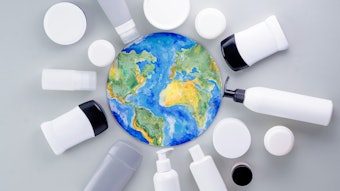REACH stands for the Registration, Evaluation and Authorization of Chemicals. It is a new legislation that has been introduced in Europe and is certain to touch everyone in the personal care industry who manufactures or sells raw materials or finished goods that are imported into Europe. European Union (EU) members agreed to institute these new regulations on December 13, 2005. According to the EU, the major objective of the REACH legislation is to cut occupational diseases and environmental issues through better monitoring of chemical products. This will require a new level of safety and ecological data on raw materials and ingredients used in finished formulations.
REACH will create a single system for both existing and new chemicals. It applies to all synthetic and natural substances used in all products, including cosmetics. Based on the Directive of the European Parliament and Council on REACH, there will be no grandfathering of substances. The anticipated date for REACH to become law is April 2007. There will be a six-month window, from April 2008 through October 2008, for pre-registration of phase-in substances. Phase-in substances are defined by the directive on REACH as substances listed in the European Inventory of Existing Chemical Substances (EINECS) or that have EHR-Laboratory Interoperability and Connectivity Specification (ELINCS) numbers, as well as materials manufactured in the European Community at least once in the last 15 years but not placed on the EU market.
New substances that are not exempt, that do not have EINECS/ELINCS numbers, and are manufactured in amounts over one ton require full registration. Full registration will begin in April 2008. In November 2008, a list of pre-registered substances will be published and registration for phase-in substances will open. Deadline dates for the registration of phase-in substances, including safety and ecological data, will depend on the volume of the substance being manufactured or imported: April 2010 for substances over 1,000 tons; April 2013 for substances from 100 to 1,000 tons; and April 2018 for substances from 1 to 100 tons. If an ingredient is not pre-registered, it is considered a new substance it will need to be registered as soon as possible.
If an ingredient has been pre-registered by someone else and a company plans to bring in that same substance, that company still has to register its material. The directive instructs the forming of a consortium among companies registering the same chemical to help share in the costs associated with the testing required.










